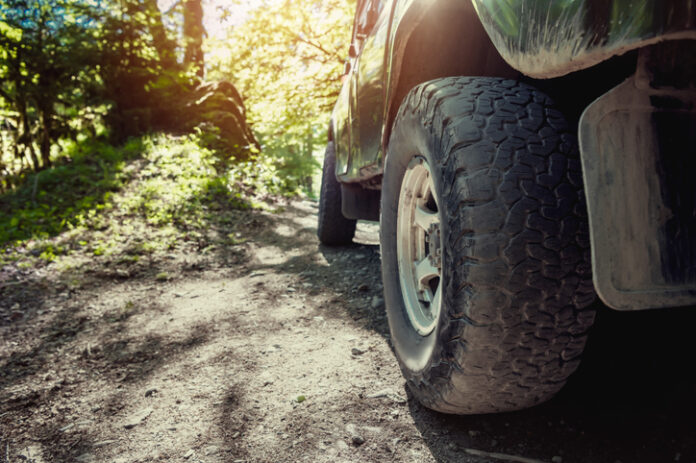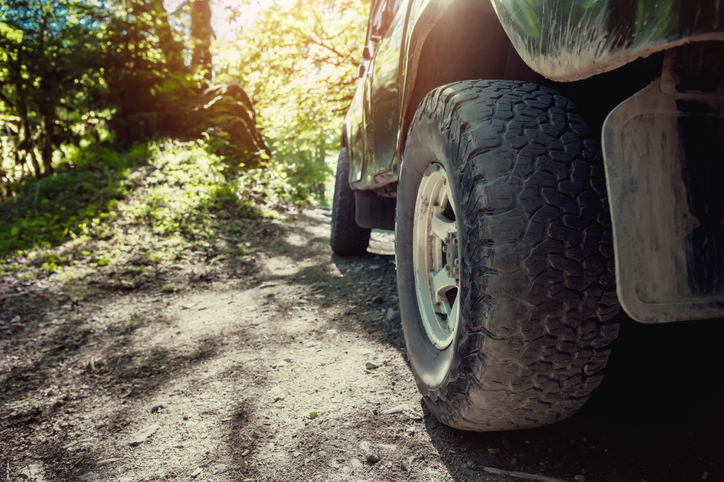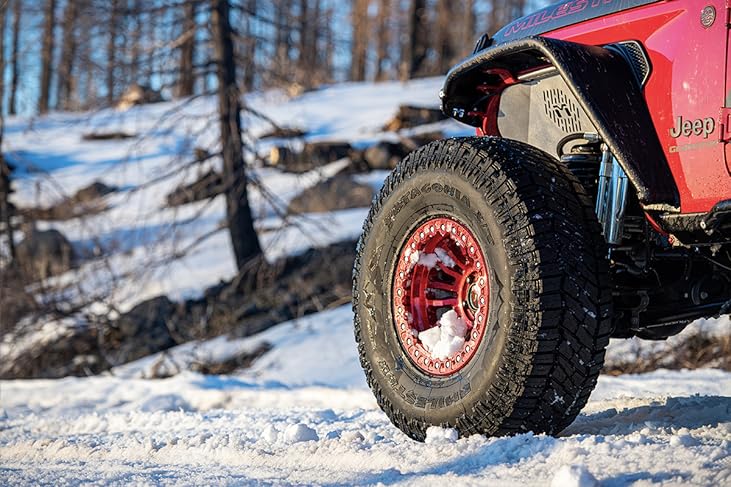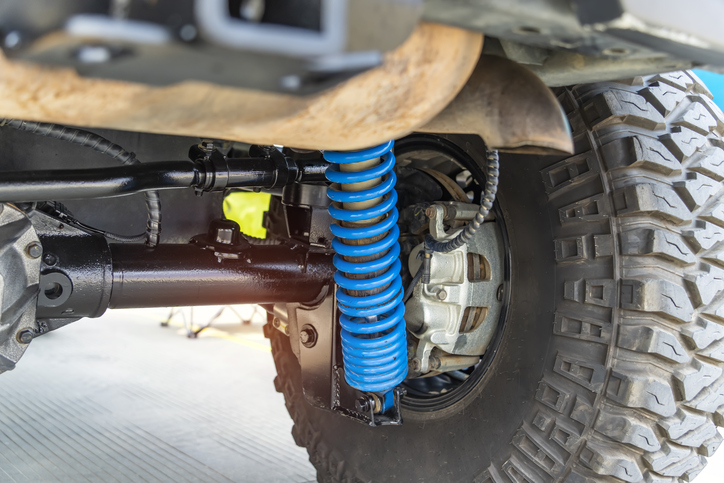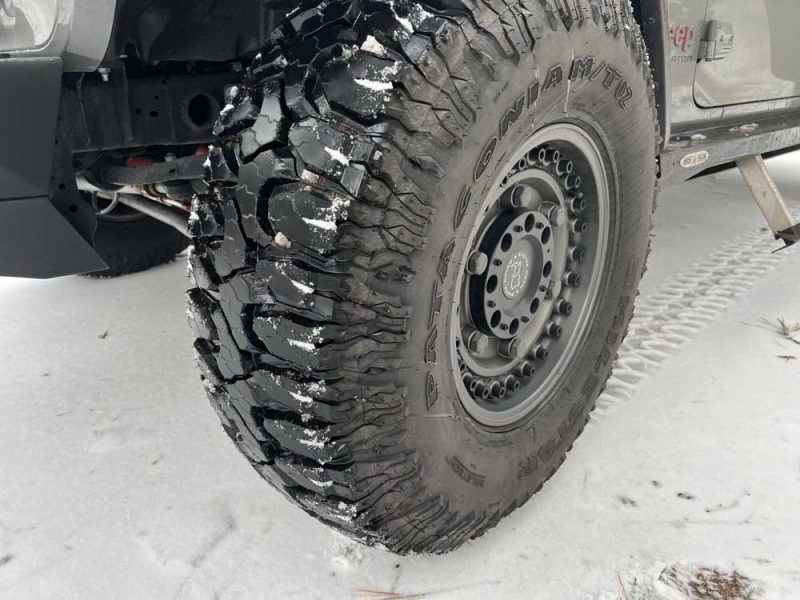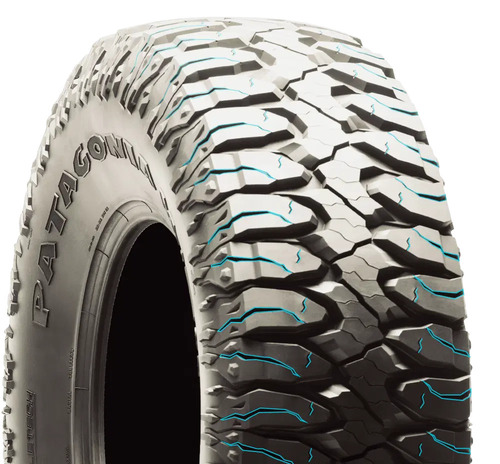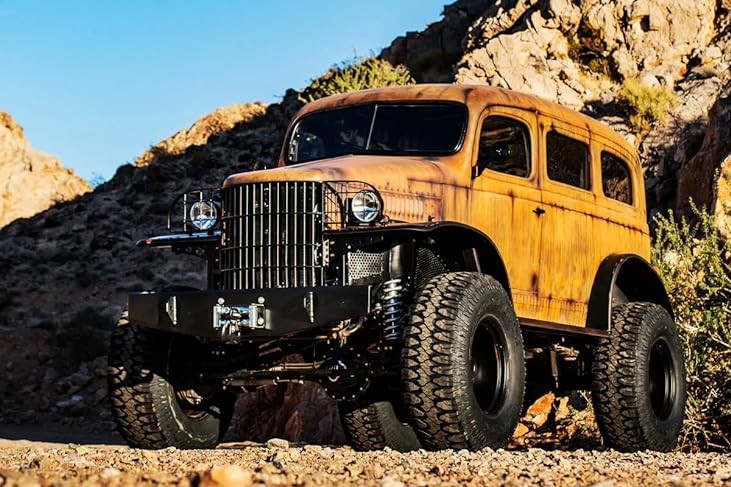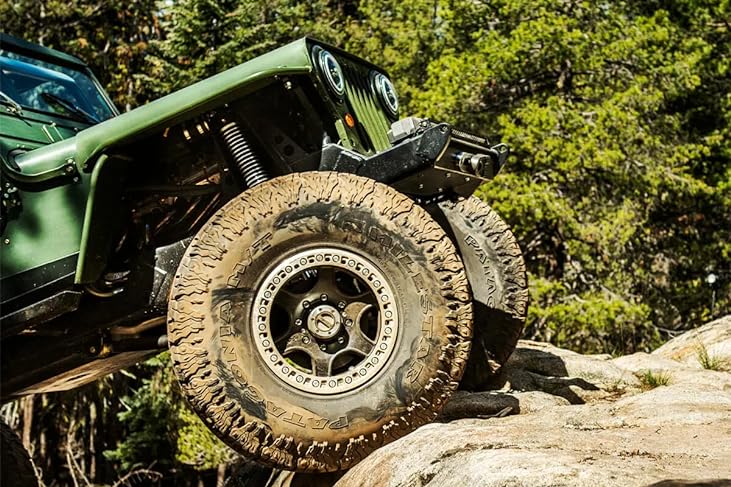Image by molchanovdmitry via iStock
Off-roading is the art of navigating and conquering unpredictable terrains, and the key to mastering this art lies beneath your vehicle – in its tires. The right set of tires can transform challenging landscapes into your playground, offering not just improved performance but also a sense of security as you venture into the unknown.
The quest for the ultimate off-road experience begins with a choice: what tires will best support your journey over rocks, through mud, and across sand? This decision hinges on a complex interplay of tire diameter, width, and aspect ratio, each impacting your vehicle’s ground clearance, traction, and overall off-roading performance.
In this exploration of tire size and its profound effect on off-roading performance, we’ll delve into the science and strategy behind choosing the perfect tires for your off-road adventure. While our focus is not solely on any single brand, we recognize the contributions of companies like Milestar, whose Patagonia MT-02 tires exemplify the balance between innovation and performance for off-road enthusiasts.
Join us as we navigate the terrain of tire size and fitment, unlocking the secrets to maximizing your off-road experience.
Table of Contents
- Understanding Tire Size and Its Impact on Off-Roading Performance
- Lift Kits and Tire Fitment for Off-Roading Performance
- Choosing the Right Tire Size for Off-Roading Performance
- Effects of Tire Size on Gear Ratio and Power
- Clearance Considerations and Fender Modifications
Understanding Tire Size and Its Impact on Off-Roading Performance
When it comes to optimizing off-roading performance, understanding the dimensions and specifications of your tires is crucial. The diameter, width, and aspect ratio of a tire play pivotal roles in how a vehicle handles various off-road conditions. A larger diameter tire, for example, increases ground clearance, allowing for smoother navigation over obstacles.
However, the benefits of a larger tire come with trade-offs. While increased width can offer better traction by distributing the vehicle’s weight over a larger surface area, it may also affect stability and fuel efficiency. Conversely, tires with a higher aspect ratio, meaning a taller sidewall relative to the width, can absorb shock more effectively, improving ride quality on uneven surfaces. Yet, this too might compromise handling and precision in steering.
When discussing tire dimensions and their impact on off-roading, the Milestar Patagonia MT-02 tires serve as an excellent example of how specific sizes and features can elevate off-road performance. With a size of LT315/70R17 and a section width of 315 millimeters, these tires offer substantial ground clearance and a broad contact area, enhancing traction and stability across diverse terrains.
Lift Kits and Tire Fitment for Off-Roading Performance
Image by kynny via iStock
Incorporating lift kits into your off-roading setup can significantly influence tire fitment and, consequently, off-roading performance. Lift kits not only allow for the installation of larger tires but also improve vehicle clearance, enhancing its ability to tackle challenging terrains.
However, the relationship between suspension modifications and tire size is delicate. A lift kit that raises the vehicle too much without adjusting the tire size accordingly may lead to a higher center of gravity, potentially affecting stability. Selecting the right tire size to complement a specific lift kit configuration is vital to maintaining handling and ride quality.
Milestar Patagonia MT-02 tires, with their 8-ply rating and a maximum pressure of 50 pounds per square inch, are built to withstand the rigors of off-roading while accommodating modifications like lift kits. The unique center rib offers enhanced stability and handling, a key consideration when choosing tires to complement lift kit installations.
Choosing the Right Tire Size for Off-Roading Performance
The ideal tire size for off-roading depends largely on the terrain you plan to conquer. Each environment presents unique challenges, from the slippery slopes of mud-filled landscapes to the abrasive surfaces of rocky trails. A tire that excels in sandy conditions might not perform as well on rocky terrain.
For mud and soft terrain, larger and wider tires with deep treads are advantageous, as they provide the necessary grip to prevent the vehicle from becoming bogged down. In contrast, navigating rocky surfaces may benefit from tires with a smaller diameter and aggressive tread patterns to enhance traction and control. Additionally, tire choice for general trail driving should focus on versatility and durability, ensuring the tires can handle a variety of surfaces without compromise.
The Milestar Patagonia MT-02, with its robust construction and versatile tread design, stands out as a top choice for off-roaders. It provides a versatile option capable of handling mud, sand, rocks, and trails. The tire’s angled biting edges and robust construction ensure effective performance across various conditions.
Effects of Tire Size on Gear Ratio and Power
Adjusting tire size can have a significant impact on a vehicle’s gear ratio and power delivery. A larger tire diameter effectively increases the distance a vehicle can travel with each revolution of the tire. While this may improve ground clearance and obstacle traversal, it also alters the vehicle’s effective gear ratio, potentially reducing acceleration and torque at low speeds.
Understanding the concept of “effective gear ratio” is key to optimizing off-road performance. As tire size increases, the effective gear ratio becomes higher, meaning the engine has to work harder to turn the wheels. This can lead to reduced torque and power output when it’s needed most, such as climbing steep inclines or navigating through tough terrain.
To counteract these effects, off-roaders may consider recalibrating vehicle systems or opting for gear ratio adjustments to restore power and efficiency. When selecting tires, especially for significant size changes, consulting with a professional to adjust the gear ratio accordingly can ensure that vehicles maintain their performance capabilities.
Clearance Considerations and Fender Modifications
Larger tires can sometimes interfere with the vehicle’s body or suspension components, especially during full articulation or when steering is at its limits. Assessing vehicle clearance before making tire upgrades is crucial to avoid these issues, ensuring that the larger tires can rotate freely without rubbing against the fender or chassis.
In some cases, fender modifications might be necessary to accommodate larger tires. Trimming or adding aftermarket fender flares can provide the extra space needed for the tires to fit without compromising the vehicle’s aesthetics or structural integrity. It’s essential, however, to approach modifications carefully to maintain the vehicle’s off-road capabilities and to ensure compliance with local regulations regarding vehicle modifications.
Disclaimer: Heads up: Clicking on our affiliate links and exploring our sponsored content helps us at no extra cost to you, and we only recommend gear we’re absolutely crazy about!



